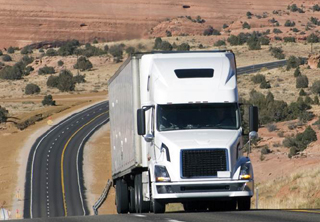Transportation — Truck/Trailer
Whether its hauling 40,000 pounds of frozen vegetables across the country, painting supplies to a job site, packages for local delivery, horses to a show, or your boat to the lake for a long weekend, aluminum extrusions are part of the truck/trailer solution. Aluminum has been an answer to delivery challenges for over 60 years, when aluminum laundry trucks first hit the streets in New York, and is poised to play an even greater role going forward.
With the EPA's first-ever mileage standards for commercial vehicles announced in August 2011, Class 8 truck builders are looking to expand their use of aluminum beyond today's average of 1000 pounds/tractor in an effort to meet a 20% reduction in both fuel consumption and greenhouse gas emissions by 2018.
The effect of such an improvement? 530 million barrels of fuel saved and 270 million metric tons of greenhouse gas avoided over the life of the improved vehicles. In finalizing the new commercial vehicle fuel efficiency regulations, EPA and the National Highway Traffic Safety Administration evaluated alternative materials as a means to mass reduction. The conclusion: aluminum's potential to reduce mass is far beyond that of alternative materials.
 |
 |
But aluminum extrusions find many applications beyond the big rigs. Package delivery trucks are extrusion intensive (One of the first aluminum-intensive vehicles was the US Postal Service LLV delivery van introduced in 1987!), and extruded components provide custom racks and fittings for a host of tradesman vans.
And today's consumer-oriented trailers — boat, ATV, utility, horse, etc. — are extrusion intensive as well. Aluminum extrusions' high strength and light weight provide improved payload with reduced fuel consumption, while their non-corrosive nature yields long life and low maintenance. Finally, with the design flexibility that extrusions offer, a high level of functionality can be engineered into the parts.
 -
-




 |
|